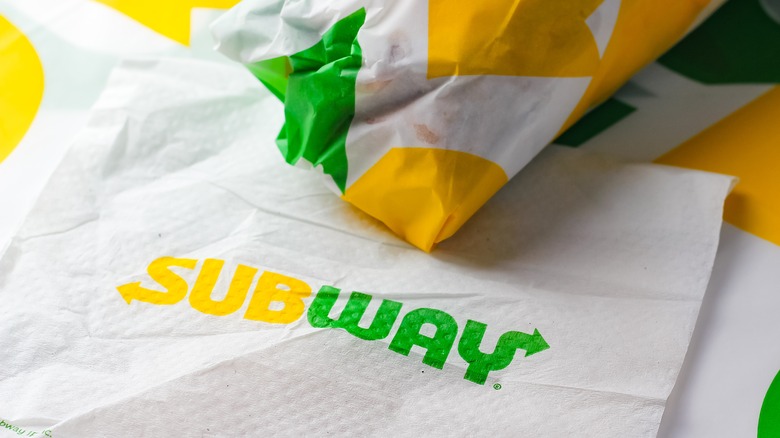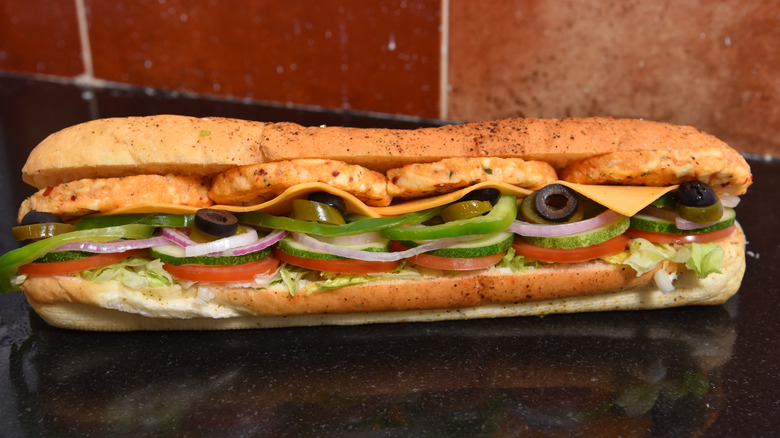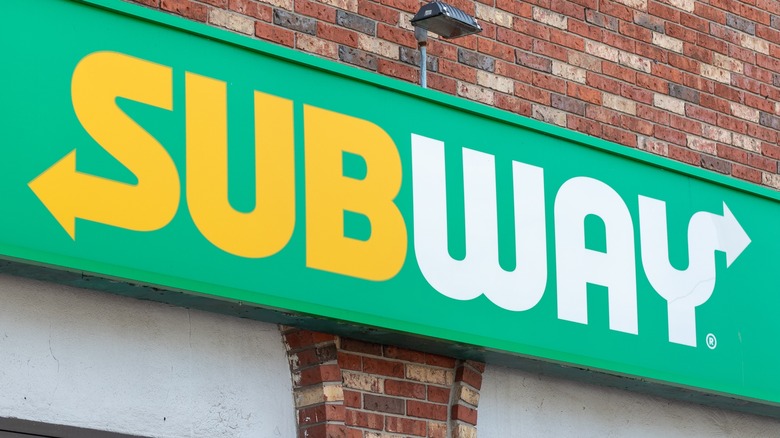Here's What Happened When Subway Tried To Open Kosher Versions Of The Chain
Back in 2006, Subway expanded its offerings by opening several locations that were fully kosher. The fast food chain announced in a press release that the restaurant's kosher locations would have only "slight modifications, such as no pork-based products such as bacon or ham, and the use of soy-based cheese." Eventually, the United States saw the opening of 15 kosher Subway sites, including spots in California, Ohio, Florida, Maryland, and New York.
Unfortunately, Subway's kosher experiment didn't last. Despite the fanfare around them at the time, just five years later, The Wall Street Journal reported in 2011 that 10 of the 15 kosher Subways had closed. By 2017, YeahThatsKosher.com claimed that only two of those five were still in operation. Those final two kosher Subways have now also closed at the time of this writing. A host of challenges and a lack of additional support meant that the kosher Subway franchises just weren't sustainable.
Higher costs proved a challenge for kosher Subways
The wealth of requirements necessary to be a 100% kosher restaurant drove the costs up across the board for the kosher Subways. Removing all ham and bacon from the traditional Subway menu might seem like a challenge, but all other meats needed to be certified kosher, too. That meant the sourcing cost for other ingredients for the kosher Subways was higher.
Additionally, the laws of keeping kosher don't just apply to the food itself. There are also aspects of the business that must be operated in certain ways to maintain that standard. According to The Wall Street Journal, the kosher Subways had to close for the Jewish Sabbath (sundown on Friday to sundown on Saturday), had to pay to be inspected and certified by a rabbinical organization, not to mention that an "Orthodox Jewish employee must turn the oven on and off each day."
Because there were so many additional costs for the kosher Subways, they ended up passing that cost on to the customer. The base prices of their sandwiches were higher than at other locations, and they weren't able to take part in the national Subway promotions such as the "$5 footlong." YeahThatsKosher.com points out that some locations in Jewish community centers were able to succeed for longer, but the higher prices quickly meant that the majority of people in the area who weren't looking to stay 100% kosher would simply go to another Subway or a different sandwich shop entirely.
Subway didn't provide additional support to their kosher locations
When an organization wants to ensure they're reaching historically marginalized communities, it is not unheard of for them to subsidize a part of the business. Even if that part is not profitable, that's not necessarily what the effort is about. Despite the initial fanfare at the opening of the first kosher Subway, this isn't something that the food chain chose to do.
According to The Wall Street Journal's account, a kosher Subway costs roughly 30% more to run. However, back in 2011, Subway still required the kosher Subways to pay 12.5% of sales to the company. Some franchisees were notably upset about this, as 4% of that went to national advertising and did not highlight any of the kosher locations or offerings. With higher costs, a smaller market, and nothing to offset the discrepancy, the kosher Subway plan was probably always destined to fail.


